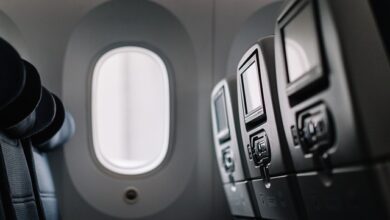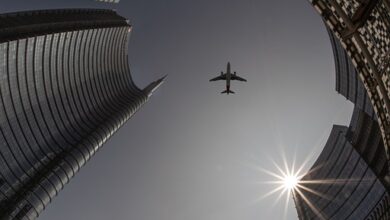The Future of Luxury Air Travel: What’s Coming Next?

The world of luxury air travel is undergoing a transformative evolution, driven by technological advancements, shifting consumer expectations, and a growing emphasis on sustainability. As airlines and aircraft manufacturers strive to redefine the flying experience, the future promises unprecedented levels of comfort, convenience, and exclusivity for discerning travelers. From private suites that rival five-star hotels to eco-friendly innovations, here’s a glimpse into what lies ahead for luxury air travel.
1. The Rise of Ultra-Personalized Experiences
1.1 Tailored Service
In the future, luxury air travel will be defined by hyper-personalization. Airlines are investing in artificial intelligence (AI) and data analytics to anticipate passengers’ preferences before they even board the plane. Imagine walking onto a flight where:
- Your favorite champagne is waiting at your seat.
- The cabin temperature, lighting, and music are adjusted to your liking.
- A digital concierge uses AI to recommend activities, meals, or entertainment based on your past choices.
1.2 Customizable Interiors
Luxury cabins will increasingly feature modular designs, allowing passengers to reconfigure their space mid-flight. For instance, you might transform your suite from a workspace during the day to a cozy bedroom at night—all with the touch of a button.
2. Private Suites That
2. Private Suites That Redefine Comfort
Redefine Comfort
2.1 Fully Enclosed Suites
Airlines like Emirates and Qatar Airways have already introduced fully enclosed suites, but the next generation will take this concept further. Expect:
- Floor-to-ceiling glass walls with adjustable opacity for privacy.
- Ergonomic seating that converts into lie-flat beds with customizable firmness settings.
- Personalized climate control systems within each suite.
2.2 In-Suite Amenities
Future luxury suites will come equipped with amenities typically found in high-end hotels, such as:
- Mini-bars stocked with gourmet snacks and premium beverages.
- Spa-inspired bathrooms with rain showers and heated floors.
- Virtual reality (VR) headsets for immersive entertainment experiences.
2.3 Dedicated Butler Service
Every passenger traveling in these suites will have access to a dedicated butler trained to handle everything from unpacking luggage to arranging in-flight dining experiences.
3. Sustainable Luxury: Eco-Friendly Innovations
As environmental concerns grow, the aviation industry is prioritizing sustainability without compromising luxury. Here’s how:
3.1 Electric and Hybrid Aircraft
Companies like Airbus and Boeing are developing electric and hybrid planes that reduce carbon emissions while maintaining the highest standards of comfort. These aircraft will likely debut on short-haul routes first, offering quieter flights and reduced environmental impact.
3.2 Carbon-Neutral Flights
Luxury carriers are partnering with organizations to offset carbon emissions through reforestation projects and renewable energy initiatives. Some airlines may offer carbon-neutral options exclusively for premium-class passengers.
3.3 Sustainable Materials
From recycled leather upholstery to biodegradable toiletries, future cabins will incorporate sustainable materials without sacrificing style or quality.
4. Cutting-Edge Technology Enhancing the Journey
4.1 Seamless Connectivity
High-speed Wi-Fi will become standard across all classes, enabling passengers to stream content, host virtual meetings, or stay connected with loved ones. Advanced satellite technology will ensure uninterrupted connectivity, even over remote areas.
4.2 Immersive Entertainment
Virtual and augmented reality (AR) technologies will revolutionize in-flight entertainment. Passengers might explore virtual art galleries, attend live concerts, or take guided tours of their destination—all from the comfort of their seat.
4.3 Health Monitoring Systems
Smart sensors embedded in seats and wearables provided by the airline will monitor vital signs, ensuring passenger well-being throughout the flight. This could include alerts for dehydration, fatigue, or stress, accompanied by tailored wellness recommendations.
5. New Concepts in Aircraft Design
5.1 Flying Hotels
Imagine stepping aboard an aircraft that feels more like a boutique hotel than a traditional plane. Companies like Aerion Supersonic and Boom Supersonic are working on supersonic jets capable of reaching destinations twice as fast as current commercial flights. These “flying hotels” will feature spacious lounges, fine-dining restaurants, and wellness centers.
5.2 Double-Decker Luxury Cabins
Future wide-body aircraft may include double-decker configurations exclusively for premium passengers. Upper decks could house private apartments complete with living rooms, kitchens, and panoramic windows.
5.3 Autonomous Flights
While still in its infancy, autonomous flight technology holds immense potential for luxury air travel. Self-piloting planes could reduce operational costs, allowing airlines to invest more in passenger comfort and service.
6. Exclusive Services Beyond the Flight
6.1 Curated Pre-Flight Experiences
Luxury doesn’t begin when you step onto the plane—it starts long before. Airlines are introducing exclusive pre-flight services, such as:
- Chauffeur-driven transfers in luxury vehicles.
- Access to private airport lounges with spa treatments, gourmet dining, and personalized shopping.
- Priority check-in and security clearance via biometric scanning.
6.2 Destination Concierge Services
Upon arrival, passengers can expect seamless transitions to their final destinations. Luxury carriers may partner with local providers to offer curated experiences, including private guided tours, yacht charters, and reservations at Michelin-starred restaurants.
7. The Role of Superyachts and Private Jets
For ultra-high-net-worth individuals, the line between air travel and other forms of luxury transportation is blurring. In the future:
- Superyacht Integration: Some airlines may collaborate with superyacht companies to create end-to-end luxury journeys, combining flights with yacht charters.
- Private Jet Networks: Subscription-based private jet services will expand, offering unparalleled flexibility and exclusivity for frequent travelers.
8. Challenges Ahead
Despite the exciting possibilities, several challenges must be addressed:
- Cost vs. Accessibility: While innovation drives progress, it also increases costs. Striking a balance between affordability and exclusivity will be crucial.
- Regulatory Hurdles: Implementing new technologies like autonomous flights requires overcoming significant regulatory barriers.
- Environmental Concerns: Achieving true sustainability remains a complex challenge, especially given the energy demands of long-haul flights.



